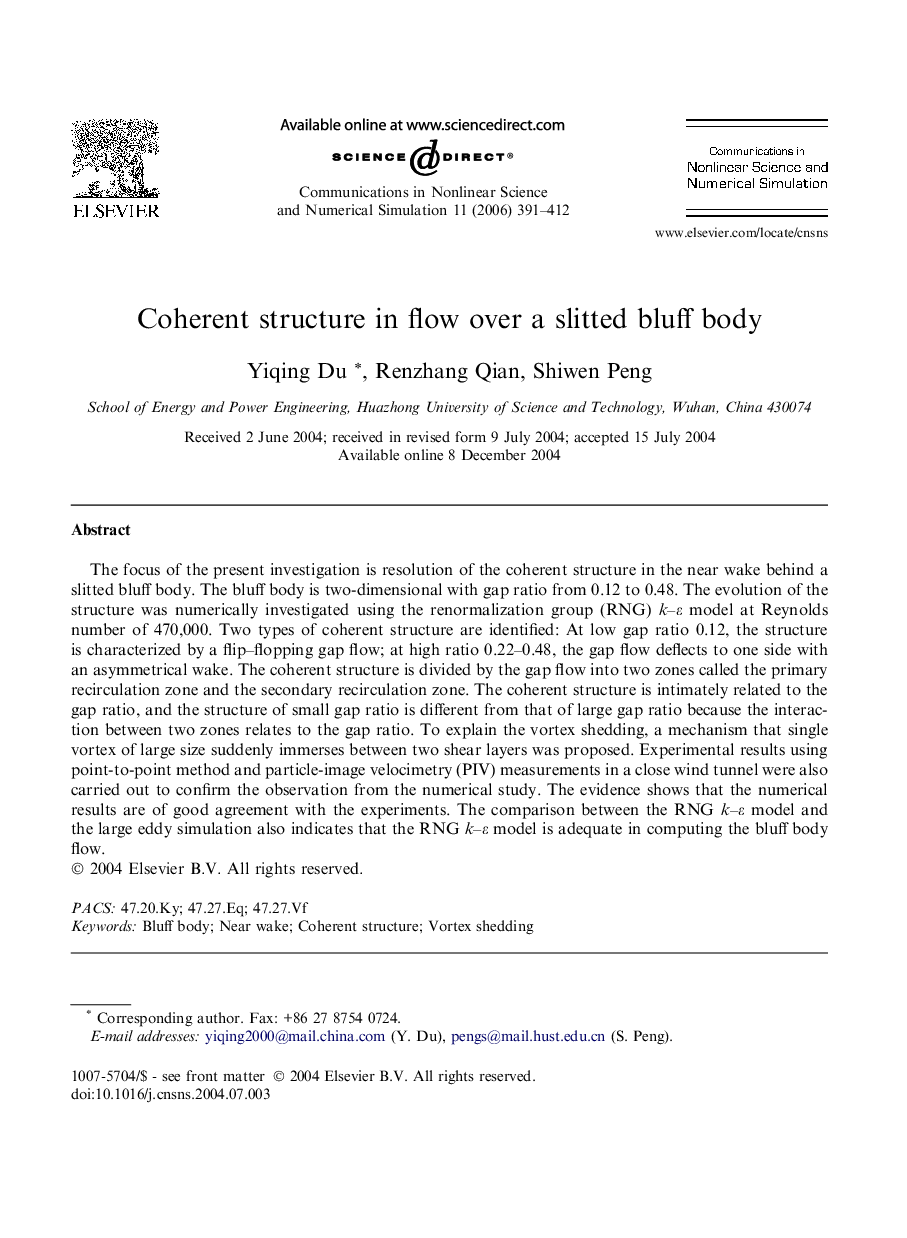| Article ID | Journal | Published Year | Pages | File Type |
|---|---|---|---|---|
| 767836 | Communications in Nonlinear Science and Numerical Simulation | 2006 | 22 Pages |
The focus of the present investigation is resolution of the coherent structure in the near wake behind a slitted bluff body. The bluff body is two-dimensional with gap ratio from 0.12 to 0.48. The evolution of the structure was numerically investigated using the renormalization group (RNG) k–ε model at Reynolds number of 470,000. Two types of coherent structure are identified: At low gap ratio 0.12, the structure is characterized by a flip–flopping gap flow; at high ratio 0.22–0.48, the gap flow deflects to one side with an asymmetrical wake. The coherent structure is divided by the gap flow into two zones called the primary recirculation zone and the secondary recirculation zone. The coherent structure is intimately related to the gap ratio, and the structure of small gap ratio is different from that of large gap ratio because the interaction between two zones relates to the gap ratio. To explain the vortex shedding, a mechanism that single vortex of large size suddenly immerses between two shear layers was proposed. Experimental results using point-to-point method and particle-image velocimetry (PIV) measurements in a close wind tunnel were also carried out to confirm the observation from the numerical study. The evidence shows that the numerical results are of good agreement with the experiments. The comparison between the RNG k–ε model and the large eddy simulation also indicates that the RNG k–ε model is adequate in computing the bluff body flow.
